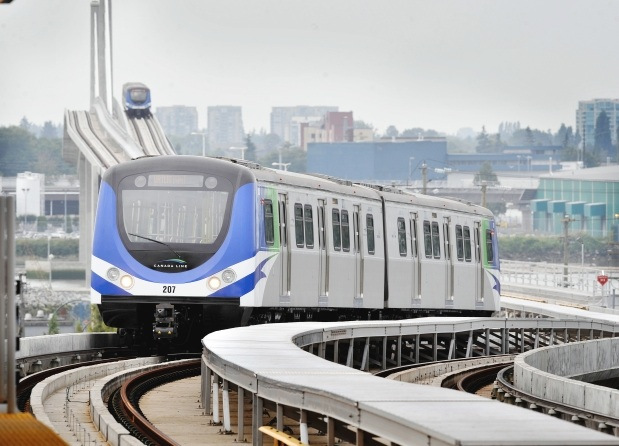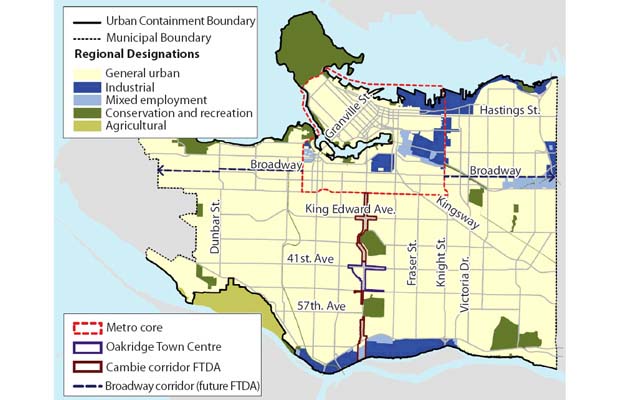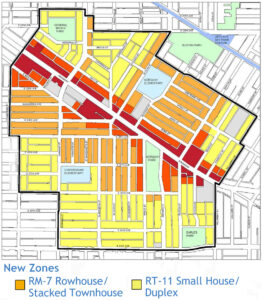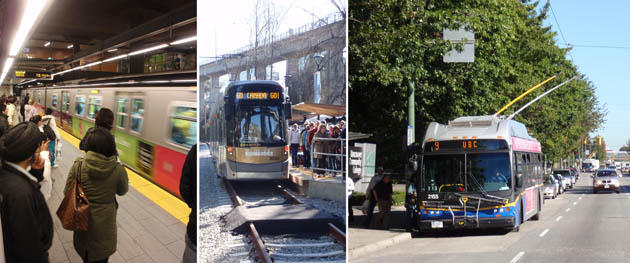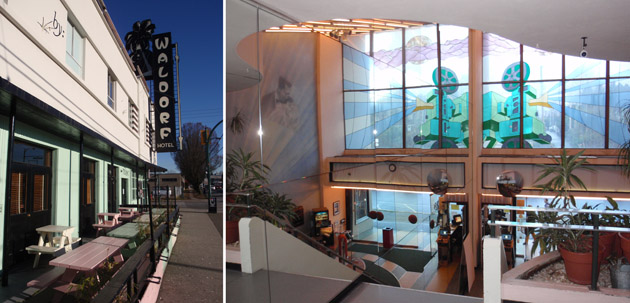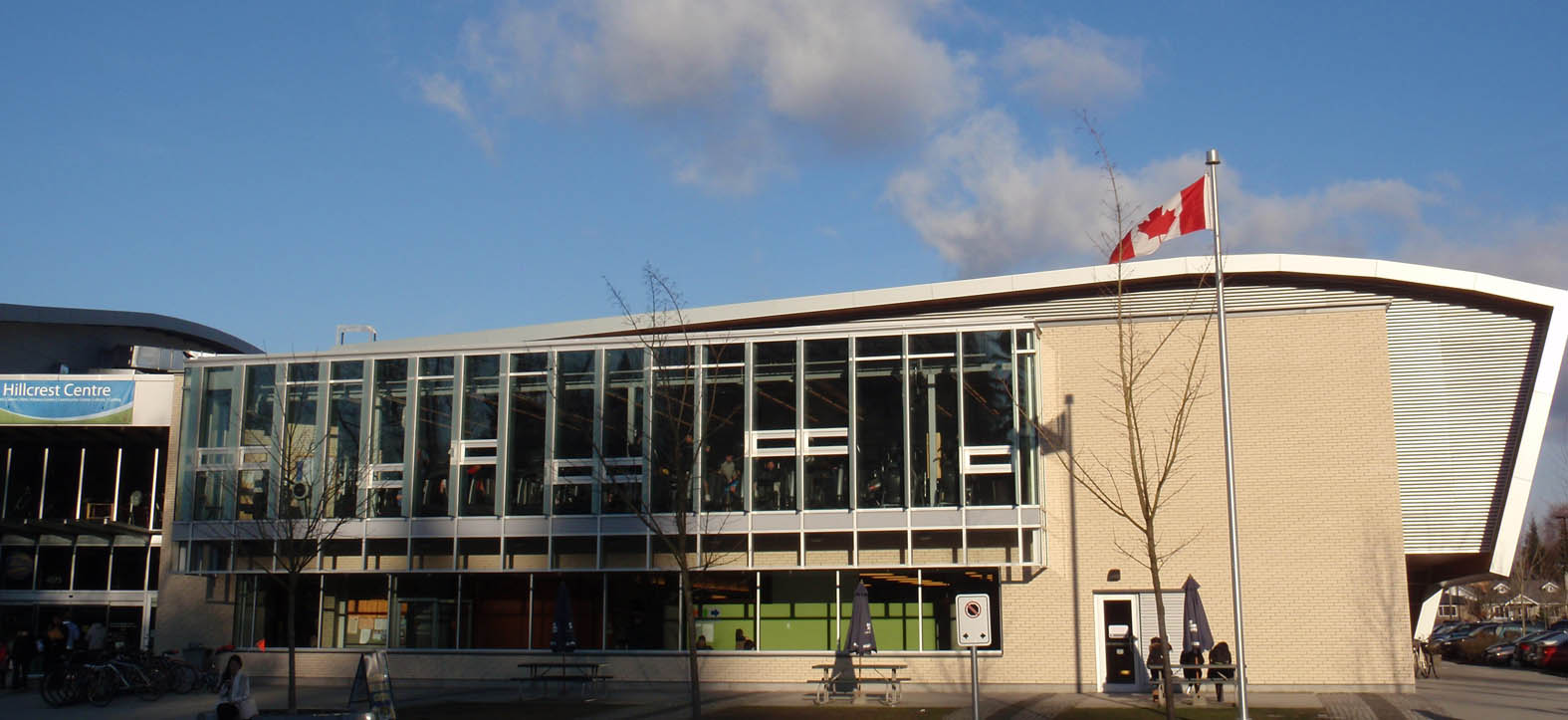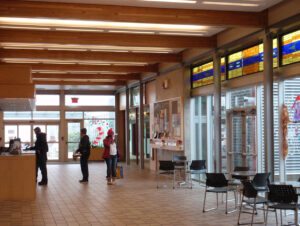NSV sent the letter below to Mayor and Council regarding the proposed changes to the Heritage Density Bank and the Transfer of Density. This letter is also available as a PDF document (click here to download).
NSV – Neighbourhoods for a Sustainable Vancouver
September 24, 2013
Mayor Robertson and Councillors
City of Vancouver
453 West 12 Avenue
Vancouver, B.C. V5Y 1V4
Dear Mayor Robertson and Councillors,
Re: Heritage Density Bank and Transfer of Density Update – Council Sept. 24, 2013
Report reference: http://former.vancouver.ca/ctyclerk/cclerk/20130924/documents/p6.pdf
Neighbourhoods for a Sustainable Vancouver (NSV) does NOT support the recommendations as proposed.
This issue has been raised by us since 2007 under then NPA Mayor Sam Sullivan’s EcoDensity. Sample letter summary and links to our letters are attached below in Appendix A.
Note that this includes our letter dated September 22, 2008 which was supported by 28 neighbourhood groups and individuals.
Mayor Robertson and Vision Vancouver committed prior to the November 2008 that you “oppose the transfer of density from the downtown Heritage Density Bank onto landing sites outside of the currently-approved areas, into communities across the City”.
However, this report today proposes similar recommendations with the same problems as previously opposed.
1. The public is not considered a stakeholder in the report and consultation has only been with the development industry and those related.
2. Proposal would allow the transfer of heritage density to be considered in CD-1 rezonings on a city-wide basis into neighbourhoods across the city, in conflict with neighbourhood community plans. The Transfer of Density Program was originally designed for density transfers into areas suitably zoned for towers such as the Downtown District and Central Broadway rather than into lower density neighbourhoods city-wide. This is a huge change of policy.
3. Proposes the expansion of Central Broadway corridor in which lands may receive up to 10 % more floor space ratio as heritage density transfer for all of the C-3A zoned sites in the city. And further for this amount to be increased to 20% subject to the Province amending the Vancouver Charter.
These recommendations are not supported and we request that the report be referred back to staff for public input as a stake holder, and to avoid conflict with the current community plan processes underway. We support heritage neighbourhood character and policy that is fair for everyone.
Sincerely,
The Steering Committee
Neighbourhoods for a Sustainable Vancouver
Group contact email: info@nsvancouver.ca Website: www.nsvancouver.ca
____________________________________________________________________________________
APPENDIX A
Summary of previous correspondence and links to previous NSV letters.
September 22, 2008 (signed by 28 neighbourhood groups and individuals)
To Mayor Sam Sullivan and NPA majority council
Re: Heritage Density Bank Review
“…We adamantly oppose allowing landing sites for heritage density transfers from the downtown Heritage Density Bank to be expanded into the neighbourhoods across the city…
The neighborhoods should be active participants as stakeholders in the Heritage Density Bank Review process and to date that has not happened. It is completely wrong to be proceeding to bring this to Council for approval when the public has not been notified and included in this review process…”
July 25, 2009
To Mayor Gregor Robertson and Vision majority Council
Re: Committee Meeting July 28, 2009 – Transfer of Density (ToD) Program and Heritage
Building Rehabilitation Program (HBRP) Review
https://nsvancouver.ca/images/stories/pdf/HeritageDensityBank/NSV-ToD-July-25-2009.pdf
“…The above item has been added to the agenda as a late report. We remind Council of our
letter sent to you on June 10, 2009 (copy below) updating you on our concerns previously raised and emphasizing your pre-election commitment that you “oppose the transfer of density from the downtown Heritage Density Bank onto landing sites outside of the currently-approved areas, into communities across the City”.
We repeat our request that you honour your pre-election commitments and oppose this option. The issues we raised in our letter dated September 22, 2008 still apply (copy also below)…”
Request for prior public notification and public included as a stakeholder.
April 22, 2010
To Mayor Gregor Robertson and the Vision majority council.
Re: Committee Meeting April 22, 2010 – Heritage Density Bank Update
“…We remind Council members of your pre-election commitment that you “oppose the transfer of density from the downtown Heritage Density Bank onto landing sites outside of the currently-approved areas, into communities across the City”. We repeat our request that you honour your pre-election commitments.
However, we note that the report that was approved by Council on July 28, 2010l included Recommendation C:
THAT, the Director of Planning be instructed to report back by November 2009 on the following, in consultation with stakeholders:
i) establishing targets to land density outside of the Central Area; and
ii) investigate further ways to land density.
We note that the Downtown Capacity Review has identified that there is enough capacity to absorb the excess density from the Heritage Density Bank in downtown and the currently approved areas for landing density. There does not appear to be any justification for expanding landing sites for Transfer of Density as proposed…
Much of the C-3A zone is outside of the Central Broadway area (Burrard St. to Main St.) which allows landing of density from the Heritage Density Bank. C-3A extends 2 block west of Arbutus St. and 2 blocks east of Main St. This is not justified nor supported.
The last bullet contemplates other areas to land from the Heritage Density bank to neighbourhoods across the City. Although heritage density transfers where the heritage asset and the landing site are within the same neighbourhood may be justified and supported, we oppose transfers from downtown to lower density neighbourhoods as this will encourage excessive heritage incentives at the expense of community amenities and affordability. Transfer of density is a complex city-wide issue that deserves public consultation and community oversight.
Again we request that the public be included as stakeholders in discussions and consultation on this important matter…”
Neighbourhoods for a Sustainable Vancouver
September 22, 2008
Mayor Sullivan and City Councillors
City of Vancouver
453 West 12 Avenue
Vancouver, B.C. V5Y 1V4
Dear Mayor and Councillors:
Re: Heritage Density Bank Review
Neighbourhoods for a Sustainable Vancouver is a city wide ad hoc organization of neighbourhood groups that includes residents’ associations, CityPlan Vision implementation committees, ratepayers’ associations and community groups. We understand that the City is undertaking a review of the Heritage Density Bank which includes the Heritage Building Rehabilitation (HBRP) and the Transfer of Density Program (TDP). These programs have the potential to impact the entire city, especially considering the policies recently approved under EcoDensity. We are concerned that to date the public has not been given adequate notification of this review and the neighbourhoods have not been included in the consultation as stakeholders.
In principle we support the City providing incentive programs for the rehabilitation of heritage buildings and preservation of heritage and character streetscapes. Our concern is that the temporary 2003 incentive programs in the heritage districts have flooded the Heritage Density Bank. The 160,000 sq. ft. in 2005 went to 1.5 million sq. ft. in 2006, followed by the freeze to the program in 2007. Based on the Altus Report presently posted on the City’s website, there is 1.6 million sq. ft. of untransferred density that has now accumulated. Already unsustainable, this approach is now proposed to be reactivated without considering all the broader implications or consulting with the neighbourhoods that could be affected. As part of the temporary incentive program, the outright zoning in the heritage districts that allows 7 stories outright in an area that is mostly 2-4 stories is excessive. These unearned density bonuses increase pressure on demolition of the heritage buildings and at the same time unreasonably increase the density in the bank. The temporary heritage incentive programs in the Heritage Districts need to be restructured with the temporary outright allowable height and density reduced to be more sustainable.
Given the density already in the bank and the additional amounts that would be added were the program to be reactivate as proposed, we understand that the City is considering change of policy to increase areas for transfer of density landing sites. We adamantly oppose allowing landing sites for heritage density transfers from the downtown Heritage Density Bank to be expanded into the neighbourhoods across the city. This would override our Community Visions while eliminating opportunities for our own local heritage projects and bring in unsupported excessive density. The character of each of Vancouver’s collection of twenty-three neighborhood villages must be respected and not used as a dumping ground for density from another area.
Considering EcoDensity was passed by Council with only 23% of letters for support and 77% of non-support or requesting changes, it does not represent a mandate to use this EcoDensity policy to transfer unsupported density from downtown into the neighbourhoods. The neighborhoods should be active participants as stakeholders in the Heritage Density Bank Review process and to date that has not happened. It is completely wrong to be proceeding to bring this to Council for approval when the pubic has not been notified and included in this review process.
Please consider our comments and we look forward to being actively included in the consultation processes to create a more sustainable plan for heritage areas.
Regards,
Neighbourhoods for a Sustainable Vancouver
Group contact email: agroupofvancouverneighbourhoods@hotmail.com
Supporting Group names:
• Advocates for Hastings Sunrise
• Arbutus Ridge Concerned Citizens Association
• Arbutus Ridge/Kerrisdale/Shaughnessy CityPlan Vision Implementation Committee
• Britannia Neighbours in Action
• Building Better Neighbourhoods
• Citywide Housing Coalition
• Douglas Park Residents Association
• Dunbar Residents’ Association
• East Fraser Lands Committee – Sharon Saunders **
• Friends of Southlands Society
• Grandview Woodland Area Council
• Hastings Sunrise CityPlan Vision Implementation Committee
• Kensington Cedar Cottage CityPlan Vision Implementation Committee
• Kitsilano Arbutus Residents’ Association
• Kitsilano Point Residents’ Association
• Marpole Oakridge Area Council Society
• Norquay Neighbours – Joseph Jones **
• North West Point Grey Home Owners’ Association
• Reinstate Third Party Appeals
• Riley Park / South Cambie CityPlan Vision Implementation Committee
• Shaughnessy Heights Property Owners Association
• South Hill Initiative for Neighbourhood Engagement (SHINE)
• Southwest Marine Drive Ratepayers’ Association
• Upper Kitsilano Residents Association
• Victoria Fraserview Killarney CityPlan Committee – Andrea Rolls **
• Victoria Park Group – Gail Mountain **
• West Kitsilano Residents Association
• West Point Grey CityPlan Vision Community Liaison Group
* Some members of the group indicate support for the letter, but have not voted on it yet due to timelines.
** Signed as an individual member
Cc: Brent Toderian, Director of Planning
Ronda Howard, Assistant Director of Planning – City-Wide and Regional Planning
Kent Munro, Assistant Director of Planning – Community Planning Division
Rob Jenkins, Assistant Director, Current Planning Initiatives Branch
Thor Kuhlmann, Planner, City-Wide Regional Planning
Cameron Gray, Director of Housing
Marco D’Agostini, Senior Heritage Planner
V-5
